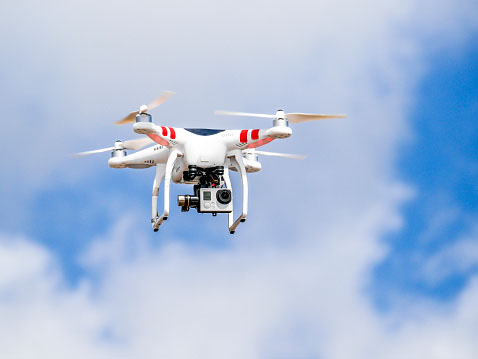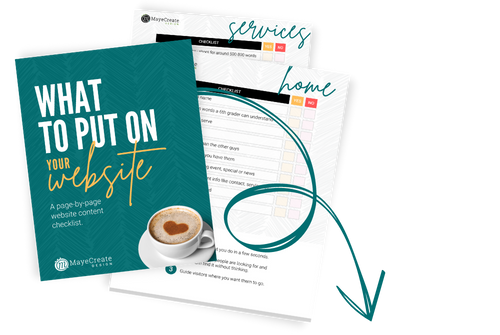UAVs for Commercial Construction Use- the Argument Drones On and On
June 20, 2015
CONSUME CREATIVELY
This content is available in:
This content is available in:
TEXT

This is a DJI Phantom quadcopter. It has four propellers, so it is an example of a rotary blade drone.
Drones are the new tool companies are raving over for their marketing and personal use. There are many potential uses for drones in the construction industry, but there are rules and regulations set in place that currently don’t allow them. So why should you care? Because your company is awesome and you need to stay up to date on technology and ahead of the competition.
Currently, a hot topic in technology is the use of Unmanned Aerial Vehicles (UAVs), or as they’re most commonly referred to, drones. Last semester I took a drone flying class and throughout this course, my class gained a basic overall knowledge about drones and the Federal Aviation Administration’s (FAA) regulations against flying in public. This included types of drones and uses in multiple industries. In class we mainly focused on agricultural applications of the technology, but commercial construction was one of the other industries we discussed as well.
What is a drone?
A drone refers to an unmanned, remotely piloted aircraft. The more proper term for this is a UAV. Originally this technology was used for military purposes, but it’s now available for public use. Anyone can buy a drone, but there are regulations on who can fly it and where. The regulations are an ongoing debate that I’ll inform you of in a couple paragraphs, but for now I will tell you more about the drone basics.
Since the drone is unpiloted, it is controlled by a remote control or control systems from the ground. The drone controller can fly the drone anywhere and it can also be synced with GPS to ensure correct location while flying. Speaking from experience, flying without GPS and only using the remote control doesn’t allow for as smooth of a flight, because the controls are touchy.
Battery operated drones:
- Average flight time of 30 minutes
- Usually smaller
Gas-powered drones:
- Average flight time of an hour
- Usually larger
Types of Drones
Fixed Wing
The first type of drone is a fixed wing. These look similar to a mini-airplane. Fixed wing drones can only fly in one direction- forward. These are ideal for aerial mapping and surveying.

Ikhana is a remotely piloted vehicle used by NASA researchers to conduct Earth science research. This is an example of a fixed wing drone.
Rotary Blade
The second type is a rotary blade, or propeller-based system, like a helicopter. Unlike the fixed wing drones, they can hover and fly in any direction- horizontal, vertical and diagonal. Rotary blade drones have many propellers and are ideal for inspection work, or surveying hard to reach areas.
Why am I talking about UAVs on a construction focused marketing blog?
You can include drone photography to add interest to your marketing.
Overhead Imagery
There are cameras that can be attached to a drone to capture high definition videos and still photos from overhead while flying. Traditionally, you would have to hire helicopters or planes to fly and capture overhead images. Using a battery operated drone, you save money on fuel and hiring out because you would be able to perform the task yourself. The images captured with your drone can be used to show your building process and finished products to customers and potential clients.
Surveillance
A popular use of drones in construction is to watch over contractors while they work. By doing this, you can:
- Ensure the proper health and safety guidelines are followed.
- Fly the drone to a fixed spot up high on a job site and land it to record the site at night to watch for trespassers and eliminate possible property damage.
As for marketing purposes, potential clients will feel safe using your company knowing you watch over your workers to make sure everything is done correctly and that the job site is safe at all hours. In the future, I think it would be cool to give clients access to the images you’re taking in a live stream. Then, they would be able to watch the building process happen and make sure everything is being done to their expectation.
You can use drones for other purposes as well.
Conduct Aerial Surveys
Before starting a project, you can easily evaluate the site if you have a drone. Eliminate any preventable problems with the site before excavating. In marketing, if you’re using the drone to show images of your process, this would be the main “before” image you would need to capture. You can also compare the images captured with the drone to Google Maps to make calculations for the building you’re constructing. Conducting aerial surveys will save time, money and resources since you won’t have to hire out for helicopters and planes. Using drones could also be useful for places where space is limited, such as cities and subdivisions where planes and helicopters can’t get as close to the ground.
Move Materials
This may be a stretch, but someday drones could be used to transport materials. If drones could transport materials from one side of the job site to the other, there will be less manual labor needed from the workers. This would be especially helpful in the hard to reach areas, where workers might have trouble moving materials with ease. The weight of the objects being transported would be an issue though, depending on the size and power of the drone being used. Another issue would be how they would pick up the materials- manually attached by a human or mechanically with a claw or net. Obviously, I don’t think this is manageable with current drone technology, but I definitely see this as a possibility in the future.
Amazon has experimented with this and plans on releasing Amazon Prime Air. Amazon Prime Air plans on being able to use drones worldwide to deliver products to customers within 30 minutes or less. Here is how they plan to use drones.
FAA Regulations
If you’re like me, by now you’re thinking, “Oh my gosh, my company needs a drone right now!” I hate to be the one to burst your bubble, but you can’t fly a drone for your company for profit without a certificate from the FAA.
Currently, the FAA doesn’t allow for the commercial use for drones. What I mean by that is, businesses can’t make profit from the use of a drone. For example, if a photographer wanted to sell pictures they took with a drone, they couldn’t because they would be making a profit. Another example would be if Nike decided to shoot footage of their store with a drone and use it for a commercial. They wouldn’t legally be allowed to do that, because it promotes their brand which creates a profit when someone buys their product after seeing the commercial. What you can and can’t do with your drone footage has a lot of grey area though, which makes the legalization of everything a fuzzy and complicated topic. Hence, the ongoing argument.
Before I was enrolled in my drone flying class, the University had already received a letter from the FAA stating that we could not legally fly drones out in the open on campus. The University was making a profit from their students who enrolled in the class. This lead the class to be held in a livestock showing arena, where we flew indoors while trying to avoid stepping in manure. Talk about multitasking!
So, to use a drone for your construction company, you must request permission from the FAA. If granted, you will receive a certificate that gives you the permission to use your drone however you wish. There are three different types of certificates drone fliers can obtain:
- Experimental Airworthiness Certificates
- Restricted Airworthiness Certificates
- Certificate of Waiver or Authorization (COA)
Airworthiness Certificates
There are two categories to gain approval through airworthiness certificates- experimental and restricted.
Restricted
The use of drones in the construction industry falls under this category. The restricted category is for obtaining a UAS type and airworthiness certificate. In this category, the use of the UAS has a special purpose. Examples of this include agriculture, weather control, aerial surveying, forest and wildlife conservation and pipeline and power line patrolling.
Experimental
The experimental category is for special airworthiness certificates. In this category, civil aircrafts are used to perform research and development, for crew training and for market surveys. Receiving compensation or hire in the use of UAS’ in the experimental category is prohibited though.
Certificate of Waiver or Authorization (COA)
With a COA, businesses can use a civil aircraft to perform commercial operations in a low-risk, controlled environment. This is filed under Section 333 in the FAA’s regulations. The exemption process provides operators who wish to pursue safe and legal operations the chance to fly prior to the finalization of the Small UAS Rule.
The FAA is in the process of making regulations, called the Small UAS Rules, for the use of small drones. They have been arguing over these rules for what seems like forever now. Once the rules are finalized, that will be the primary method for authorizing small UAS operations. Until then, the certificates above are the only legal way to fly your drone for business purposes.
As the process of finalizing the Small UAS Rules drones on, the public continues to ignore the already established rules, using drones in almost every practice. There have been many commercials shot with drone cameras, and even commercials showing drones being flown. As I’ve mentioned, universities have began teaching courses on the basics of UAVs and how to fly them.
The Argument Drones On (No Pun Intended)
The drive for the use of drones is there, and the public knows this. We don’t have time to sit around and wait for the FAA to finalize the Small UAS Rules. The construction industry has a major opportunity with drone usage on job sites. If your company is like Mayecreate, you know the importance of adapting to new techniques and technology to stay ahead of the competition. If you’re seriously interested, I urge you to request permission to fly through the FAA. Drones are the next big thing. Will you use this as an opportunity to advance your company, or will you trail behind your competitors?
Who Manifested This Madness?

This fabulous human, that's who.
Monica Maye Pitts
Monica is the creative force and founder of MayeCreate. She has a Bachelor of Science in Agriculture with an emphasis in Economics, Education and Plant Science from the University of Missouri. Monica possesses a rare combination of design savvy and technological know-how. Her clients know this quite well. Her passion for making friends and helping businesses grow gives her the skills she needs to make sure that each client, or friend, gets the attention and service he or she deserves.






